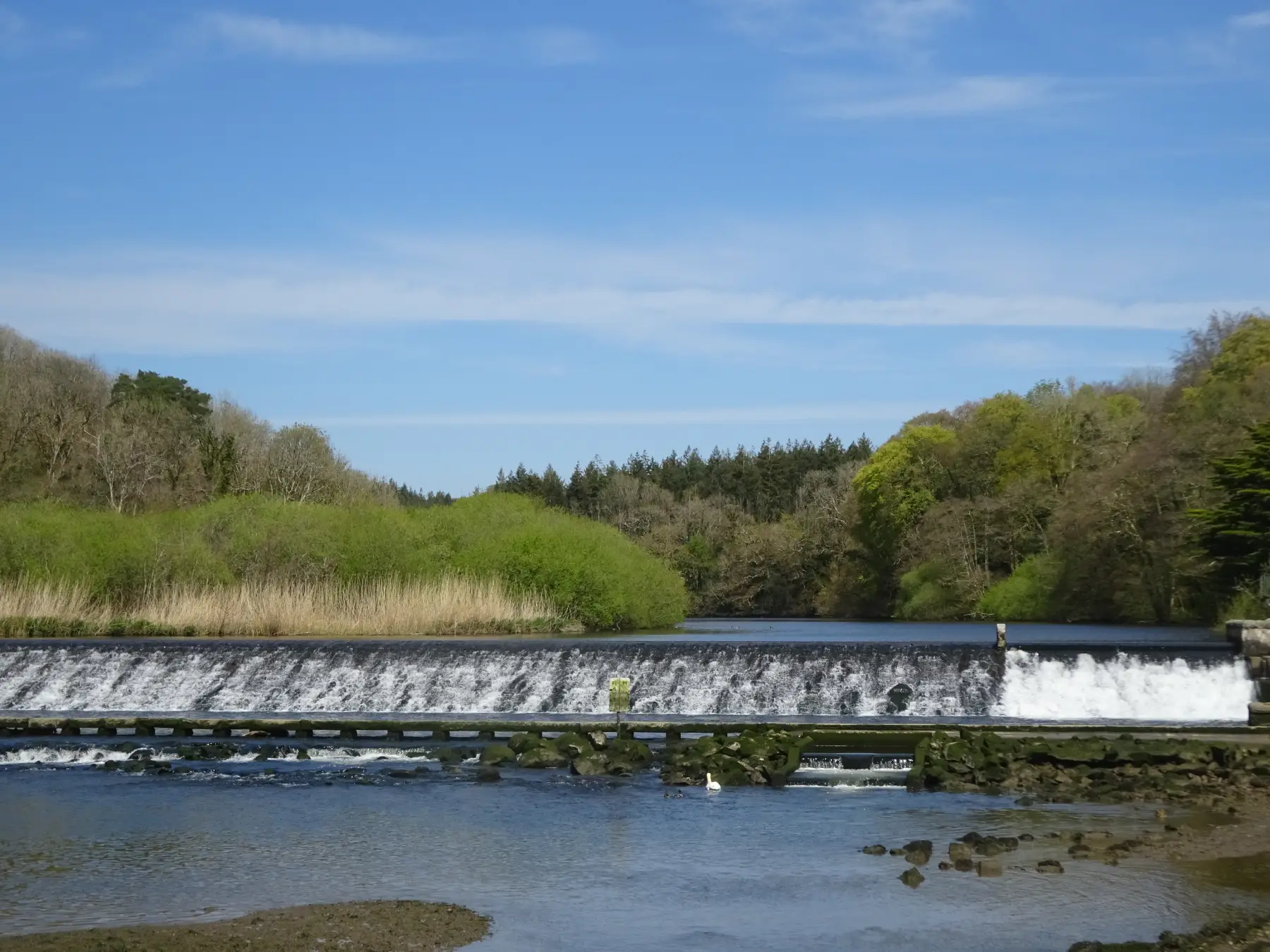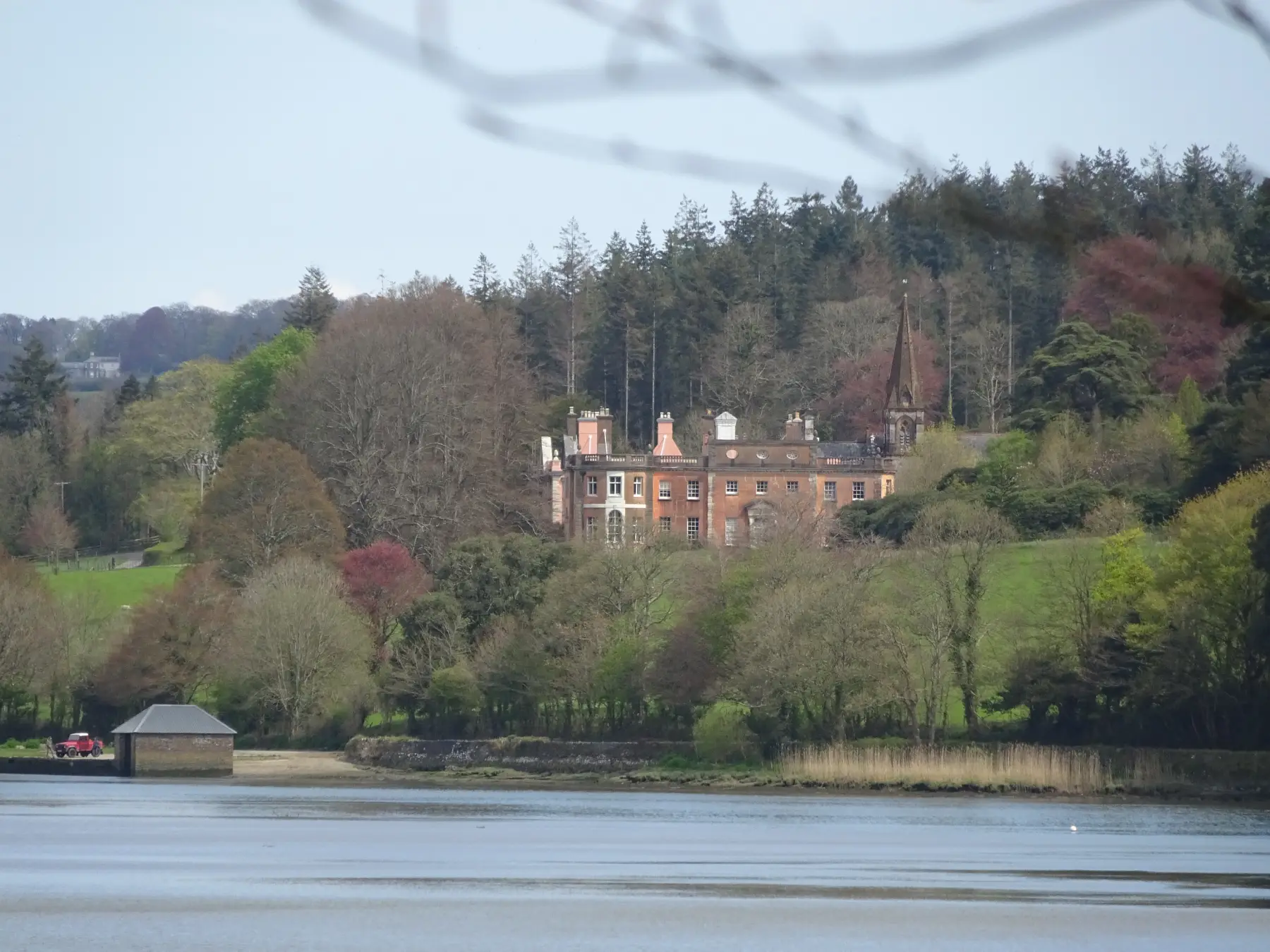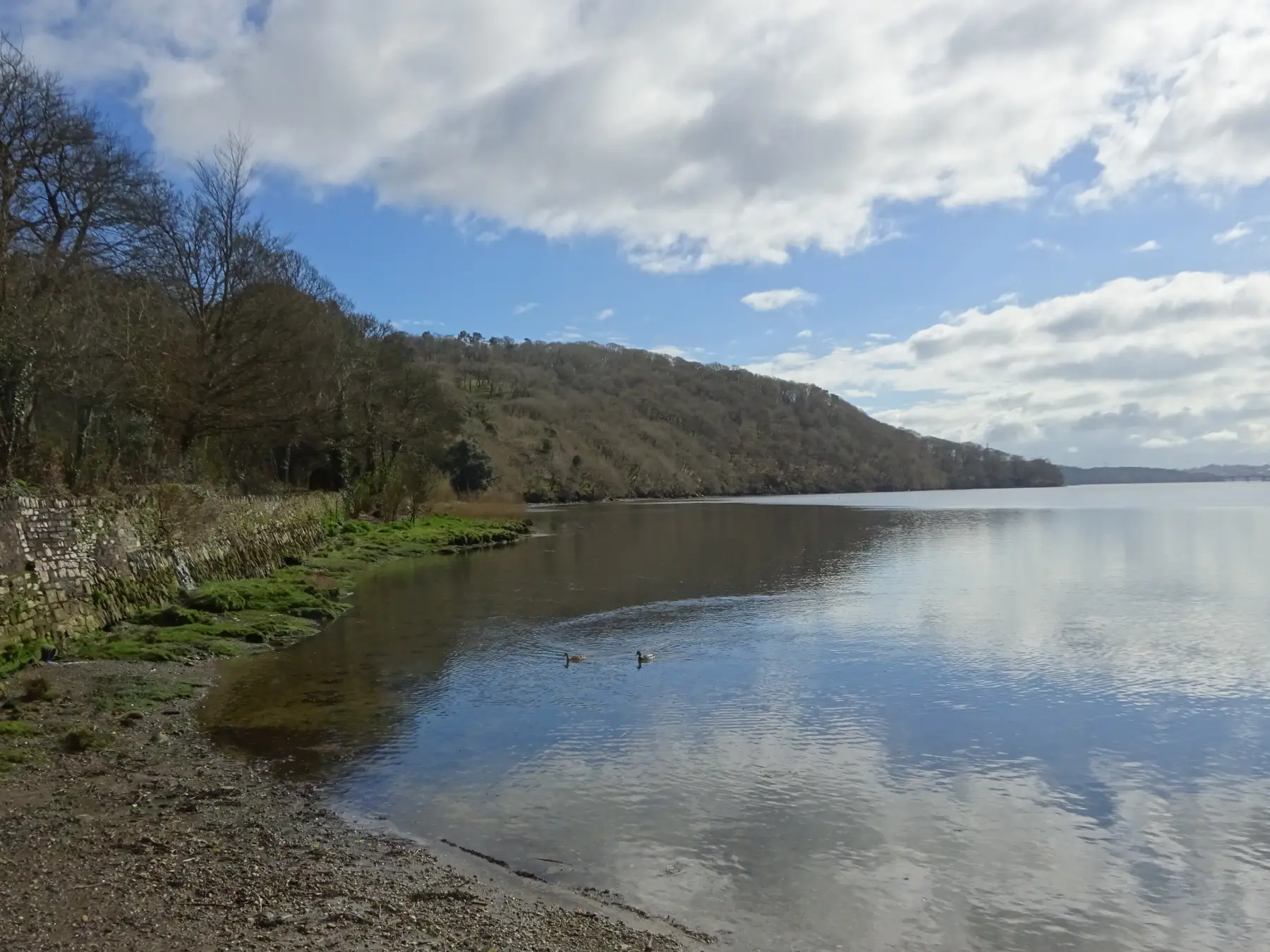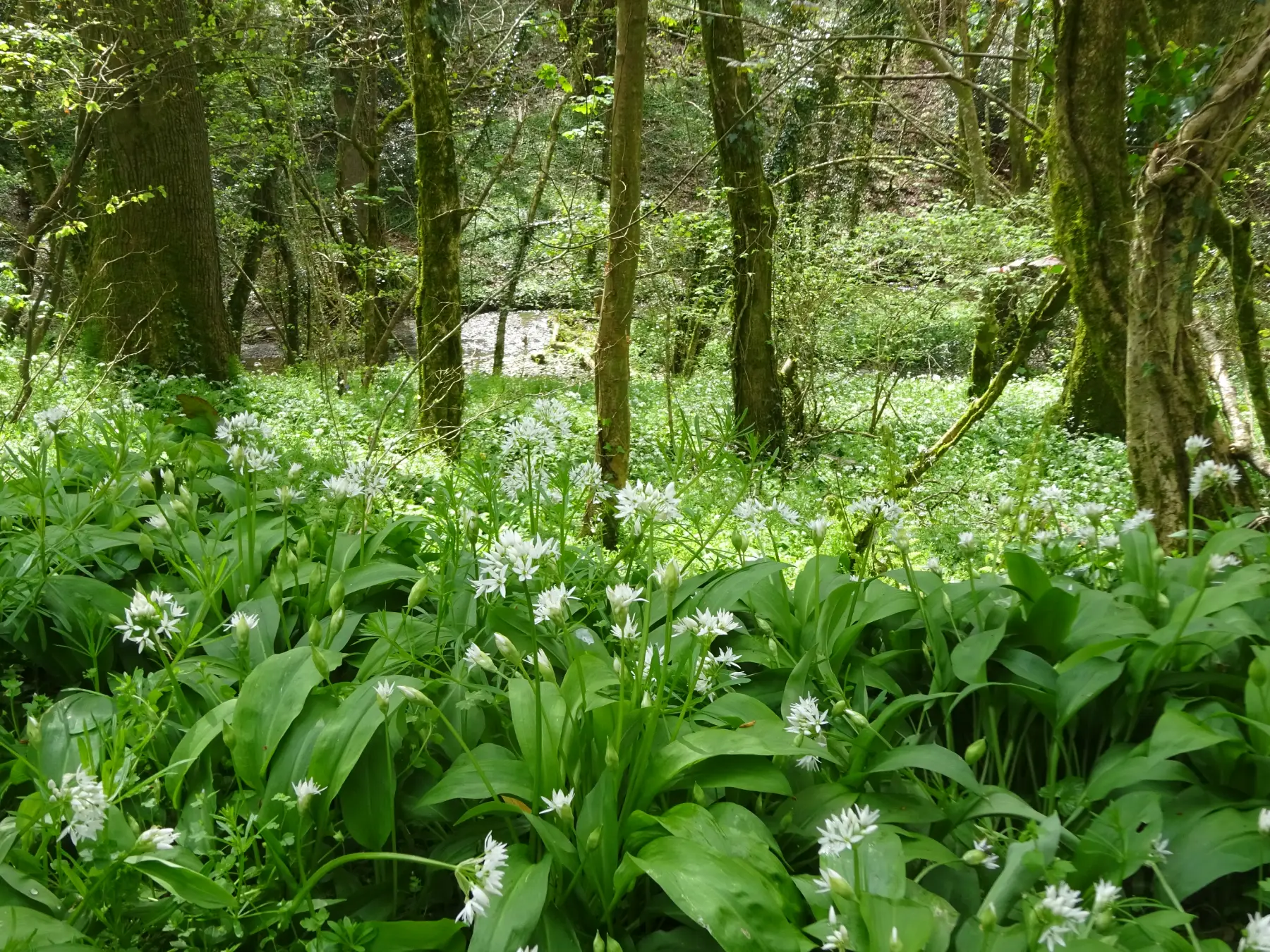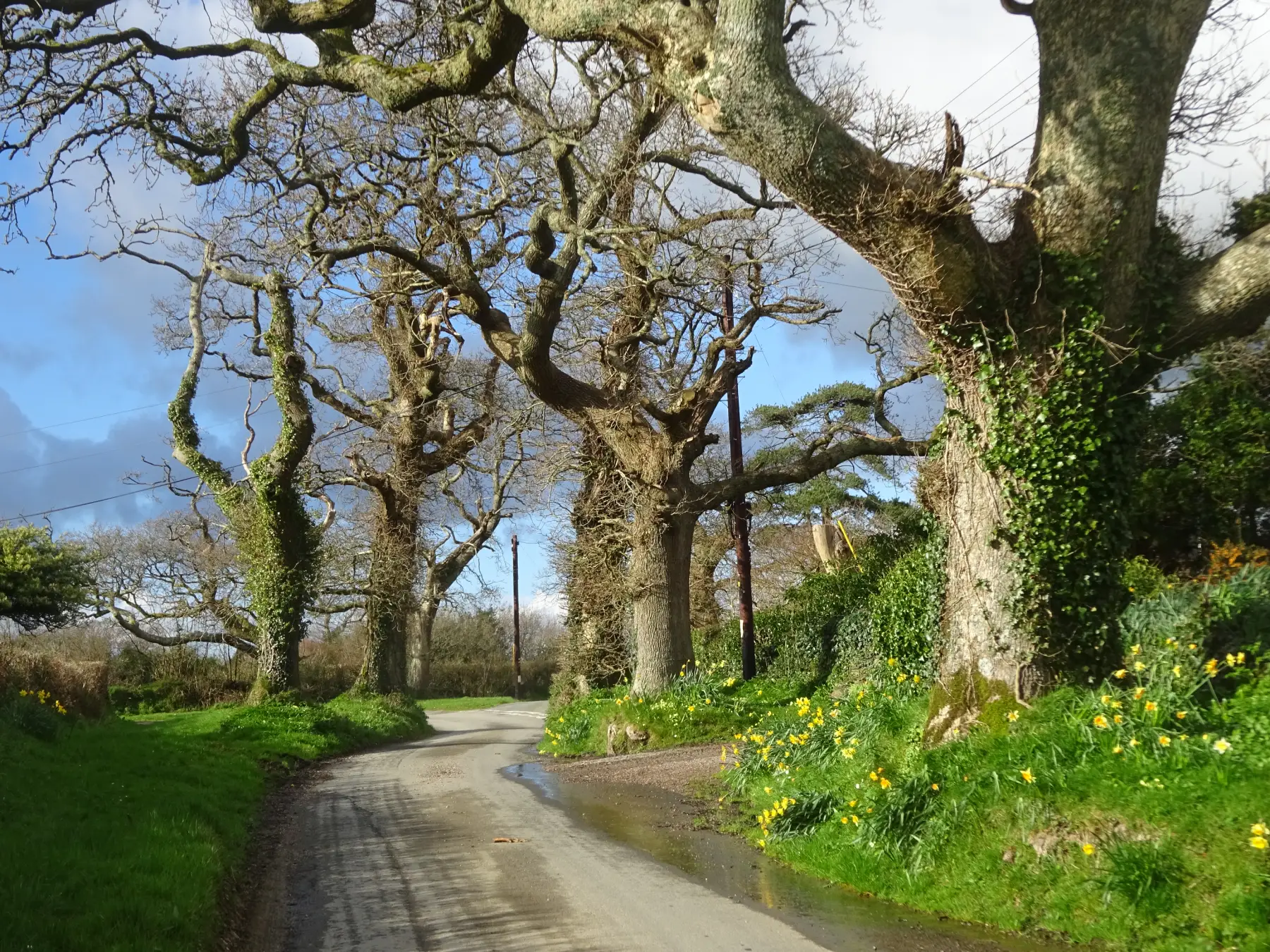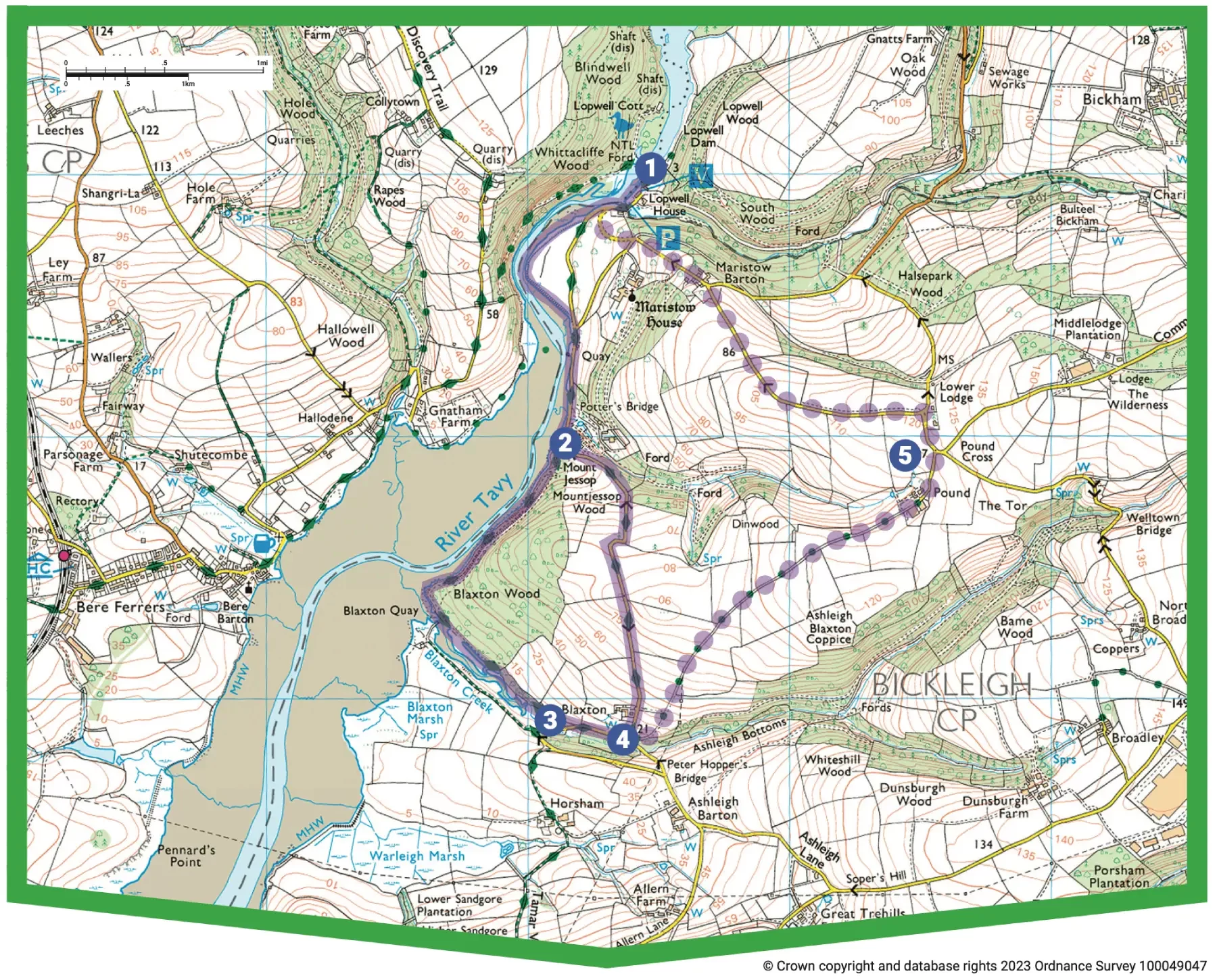Step 1
SX 474649
From the car park turn right along the lane, on the Tamara Coast to Coast Way (TCCW). Just before the lane bears left, uphill, across parkland, turn right on a lane alongside the river. Look out for a gate on the right, giving access to a narrow permissive path along the riverside embankment, which skirts marshy ground and eventually re-joins the lane via a stile.
Turn right to pass the site of Maristow Quay, where the river broadens into an estuary. The quay was developed in the 19th century, on the site of earlier jetties; silver and lead from mines on the Bere peninsula were shipped out from here.
A sign warns vehicles not to cross the river at an old ford by the quay – still a legal road –which once led to Gnatham. Pass an entrance to Maristow Gardens, and cross Potter’s Bridge.

